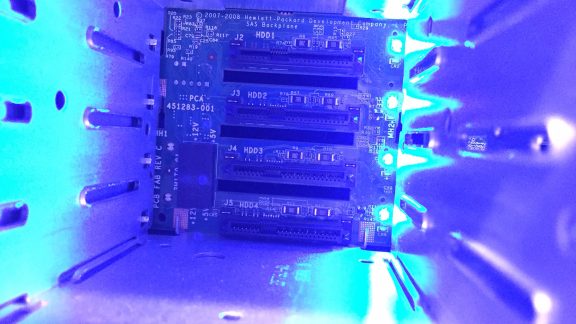A quick post here today to talk about why I think 2016 will see all flash VSAN overtake 10K RPM drive based hybrid VSAN as the most popular deployment choice.
Remember when predictions were made in that 15K RPM drives would loose their relevance to flash? 10K RPM drives are next up to be displaced.
Flash has significant performance advantages over 10K RPM drives. Flash delivers thousands of times more IOPS at lower latency enabling workloads with wide random patterns that lead to cache misses to deliver constant latency and IOPS.
Flash has capacity advantages over 10K RPM drives. Today we have certified 4TB flash drives with the flash vendors promising very aggressive road maps this year.
The objection of why all flash was not chosen over 10K RPM drives was always cost. This comparison though has changed and if the trend continues 2016 will be the year that flash overtakes 10K RPM drives on cost for all practical purposes.
Having worked with VSAN since the public (and private beta) I have been tracking the price of the enterprise grade flash components that are on the VSAN Comparability Guide. When I was building out my first VSAN clusters for my lab the least expensive drives I could find were approximately $2.50 USD per GB. Considering Hybrid VSAN allows you to mix high performing flash with lower cost magnetic capacity drives this delivered a lot of great value (and performance!)
As the flash industry pushed deeper densities, improved processes and improved endurance prices have fallen. This past month I checked prices again for cache and capacity tier flash drives. Drives certified for capacity usage by all flash VSAN are .65 per GB and cache tier drives are .75 USD per GB. Flash drives components for VSAN today can be purchased for less than 1/3 of what they did at launch.
10K RPM drives have fallen in price, but at a much slower pace than flash. At the current trend, flash will soon overtake and displace 10K RPM drives on cost in the same way it has with 15K RPM drives. More importantly the continued fall (as well as other advances in space efficiency) will enable all flash VSAN to drop below $1 per GB usable. Speaking with customers this barrier will open up a lot of possibilities for accelerating Tier 2 and tertiary workloads.
Speaking with the flash vendors the technologies that are driving down costs (3D NAND) continue to have plenty of road map for the coming year. New classes of memory and other advances promise even faster storage options.
There are other cost benefits to all flash VSAN. Lower latency can lead to faster processing, lower effective CPU usage per workload, and increased virtual machine density. With per core and per socket licensing for many applications this can lead to significant cost savings at scale.
Now I do want to make it clear that Hybrid VSAN is not going away. I expect the slower 7.2K RPM NL-SAS drives will remain cheaper than flash for quite some time. Many customers use these with VSAN and have great results. A key takeaway, however, is that all flash provides advantages above and beyond hybrid for workloads that need incredibly consistent latency, or that need the highest possible performance with highly random workloads.
What should you take away from this information?
If you have not priced out all flash VSAN in a while give it another look (and check the prices often, as prices will still be falling!). 10K RPM may still make sense tomorrow, but as time goes on this will change.
For anyone wanting see what happens when All flash VSAN is “turned up to 11” check out Intel’s benchmarks of a 64 node 500TB of flash.
I would also recommending reading Jason Massae’s thoughts on why all Flash has a better TCO. He makes some great points regarding infrastructure overhead savings from all flash.




